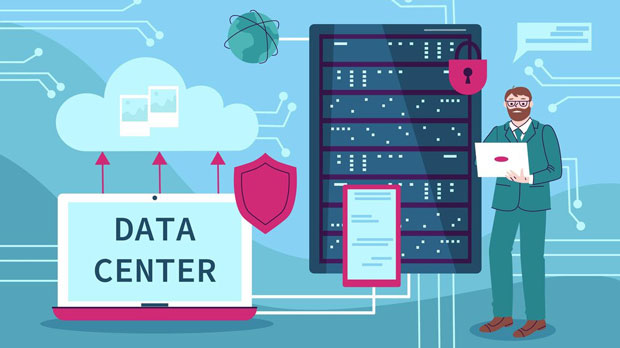In today’s digital era, the efficient management of social media accounts has become critical for businesses, influencers, and digital marketers alike. With the increasing need for robust, scalable, and secure solutions, leveraging PYPROXY data center servers presents an ideal option for optimizing social media management. These servers provide unparalleled speed, security, and scalability, enabling businesses to handle large-scale social media operations effectively. This article explores the benefits and practical implications of using PYPROXY data center servers for social media account management. Why Social Media Account Management Needs OptimizationSocial media is a powerful platform for communication, brand awareness, and direct customer interaction. With millions of active users across various platforms, managing multiple social media accounts effectively can be a challenge. The complexity increases when handling high-volume interactions, running marketing campaigns, and tracking performance analytics. Optimization is necessary to ensure smooth operations, maintain consistent engagement, and manage vast amounts of data. Here’s where PYPROXY data center servers come into play.The Role of PYPROXY Data Center Servers in Social Media OptimizationPYPROXY’s data center servers are specifically designed to handle high-demand digital operations. By using these servers, social media managers and businesses can streamline their operations, gain access to faster processing speeds, and benefit from higher security levels. Let’s dive into the key areas where PYPROXY servers contribute to optimized social media account management.1. Enhanced Speed and EfficiencySpeed is critical in social media management. Whether it's posting content, responding to customer queries, or running advertisements, delays can lead to missed opportunities. PYPROXY data center servers offer low latency and high-speed connections, ensuring that all social media tasks are carried out quickly and efficiently. This is particularly beneficial when managing multiple accounts across different platforms, as it minimizes lag and boosts overall operational speed.2. Improved Security and Data PrivacyData security is a top concern for businesses operating on social media. With PYPROXY servers, users can enjoy enhanced security measures that protect sensitive data, account information, and customer interactions. Data encryption, private IP management, and secure server connections ensure that all social media activities are safe from potential threats. Moreover, PYPROXY provides DDoS protection and other security protocols that shield accounts from cyberattacks and unauthorized access.3. Scalability to Handle Growing DemandsAs social media accounts grow in size and reach, the demand for resources increases. PYPROXY’s scalable data center servers can easily accommodate this growth. Whether managing a small business profile or a multinational brand’s presence, these servers ensure that social media management remains smooth, even during peak traffic periods. The flexibility to scale up or down according to the requirements of the business is a significant advantage for marketers looking for long-term sustainability.4. Centralized Management of Multiple AccountsManaging multiple social media accounts across various platforms can be overwhelming. With PYPROXY data center servers, businesses can centralize their management, making it easier to schedule posts, track interactions, and analyze performance from one dashboard. This centralization reduces complexity, improves workflow efficiency, and allows social media managers to stay on top of their operations with minimal effort.5. Performance Analytics and Data InsightsSocial media success isn’t just about posting content but understanding the impact of those posts. PYPROXY servers provide high-performance capabilities for data analytics, allowing businesses to gather deep insights into their social media performance. With these insights, businesses can optimize their strategies, tailor their content to specific audience segments, and ensure their marketing efforts are yielding the best return on investment.6. Reduced Risk of Account Suspensions and BansOne of the major concerns when managing multiple social media accounts is the risk of account suspensions or bans due to suspicious activities such as spammy posts or sudden surges in traffic. With PYPROXY data center servers, businesses can ensure smoother account management with dedicated IP addresses and rotation techniques that reduce the chances of triggering platform algorithms. This significantly lowers the risk of penalties, allowing businesses to maintain a consistent online presence.7. Geolocation Flexibility for Global ReachSocial media platforms are global in nature, and sometimes businesses need to manage accounts targeting different regions. PYPROXY’s data center servers offer geolocation flexibility, meaning users can simulate different geographical locations. This is crucial for businesses that want to create region-specific content, run targeted ads, or analyze regional performance metrics without restrictions. It also enables businesses to avoid geo-blocking issues and local censorship.8. Cost-Effective Social Media ManagementOperating multiple social media accounts often comes with significant costs, especially when outsourcing tasks like content creation, posting, and analytics. By using PYPROXY’s data center servers, businesses can reduce their reliance on third-party tools and services. The scalability and efficiency of the servers ensure that even smaller businesses can leverage professional-grade tools at an affordable price, making it a cost-effective solution for social media management.Best Practices for Using PYPROXY Data Center Servers in Social Media ManagementTo maximize the benefits of using PYPROXY servers for social media optimization, it’s essential to follow a few best practices:1. Leverage Automation Tools: Use automation for scheduling posts, responding to common queries, and tracking engagement. This allows your team to focus on strategic aspects while the automation handles routine tasks. 2. Monitor Server Performance Regularly: Keep track of server performance and traffic loads to ensure your operations remain smooth. Regular monitoring helps identify potential issues before they become major disruptions. 3. Prioritize Data Security: Always implement strong passwords, two-factor authentication, and regular backups to ensure that your social media accounts remain secure.4. Use Multiple Server Locations: Take advantage of PYPROXY’s multiple server locations to optimize reach and performance in different markets.Optimizing social media account management is no longer a luxury but a necessity in today’s competitive digital environment. PYPROXY data center servers offer businesses the tools they need to manage their social media presence efficiently, securely, and at scale. From enhanced speed to superior security, scalability, and global reach, these servers provide a comprehensive solution to the challenges faced by businesses in the digital space. By leveraging PYPROXY’s powerful infrastructure, businesses can ensure that their social media strategies are effective, sustainable, and future-proof.
Nov 13, 2025



































































